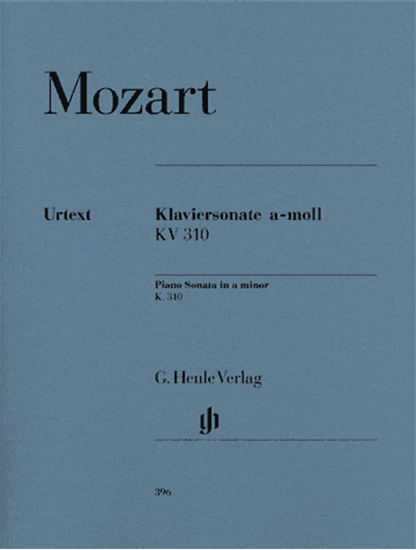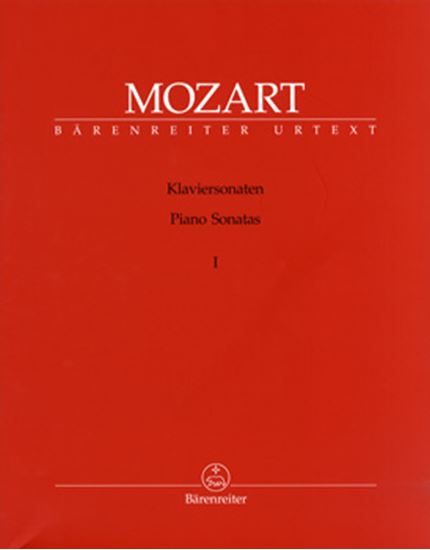Mozart, Wolfgang Amadeus : Sonate für Klavier Nr.9 a-moll K.310 K6.300d
Work Overview
Publication Year:1781
First Publisher:Heina
Instrumentation:Piano Solo
Genre:sonata
Total Playing Time:18 min 30 sec
Copyright:Public Domain
Additional Notes:新モーツァルト全集では、ソナタ番号が旧来の「8番」から「9番」へと変更された。
Commentary (1)
Author : Okada, Akihiro
Last Updated: October 1, 2009
[Open]
Author : Okada, Akihiro
The circumstances surrounding the composition of this sonata remain unknown, apart from the inscription "1778/Paris" found at the upper right corner of the surviving autograph manuscript (housed in the Pierpont Morgan Library, New York).
Mozart's journey with his mother, Anna Maria, began on September 23, 1777, departing from Salzburg and arriving in Paris on March 23, 1778, via Munich, Augsburg, and Mannheim. The purpose of this journey was to find employment, but this objective was not achieved. Furthermore, during their stay in Paris, his accompanying mother passed away in July, which was undoubtedly a great sorrow for the young Mozart, then only 21 years old.
Traditionally, this sonata has been interpreted in connection with his mother's death; however, the fact that its key is in a minor mode (unusual for Mozart) does not necessarily mean it reflects his personal sorrow. This is because there is no evidence whatsoever that the sonata was composed after his mother's death.
First Movement: A minor, 4/4 time, Sonata form
Under the indication "Maestoso," the movement begins with a main theme characterized by a dotted rhythm, set against an accompaniment of repeated chords. The subordinate theme (from m. 23) is presented in the relative major, and a continuous sixteenth-note motion dominates from the transition (from m. 35) to the coda (from m. 45).
The second half begins in C major, the key in which the first half concluded, and motives from the main theme are developed in E minor, A minor, and D minor. Following a motive from the transition, a chromatic ascent leads directly into the recapitulation of the main theme (from m. 80). From the subordinate theme (from m. 104) onwards, the movement remains in the tonic key of A minor, concluding the movement.
Second Movement: F major, 3/4 time, Sonata form
In contrast to the A minor of the first movement, F major, the subdominant of the relative major, is chosen.
Although an Andante movement, it is in a two-part form and clearly in sonata form, featuring a subordinate theme in the dominant (from m. 15) and its recapitulation in the tonic (from m. 68). However, it is adorned with scales and ornamental passages, showing a similar characteristic tendency to the middle movements of previous sonatas.
Third Movement: A minor, 2/4 time
In a rapid tempo (Presto), a motive consisting of a dotted quarter note plus an eighth note dominates the entire movement. The middle section (from m. 143) shifts to the parallel major, but here too, the opening motive dominates the music.
Movements (3)
Mov.2 Andante cantabile con espressione
Total Performance Time: 10 min 00 sec
PTNA & Partner Channel Videos(10items) View More
Sheet MusicView More
Scores List (19)

(株)全音楽譜出版社

(株)全音楽譜出版社

(株)全音楽譜出版社

(株)全音楽譜出版社

KMP(ケイ・エム・ピー) ケイエムピー

KMP(ケイ・エム・ピー) ケイエムピー

(株)リットーミュージック

(株)オンキョウパブリッシュ〇

(株)全音楽譜出版社

(株)音楽之友社

ヘンレ社(ヤマハ)

(株)全音楽譜出版社

ヘンレ社(ヤマハ)
















